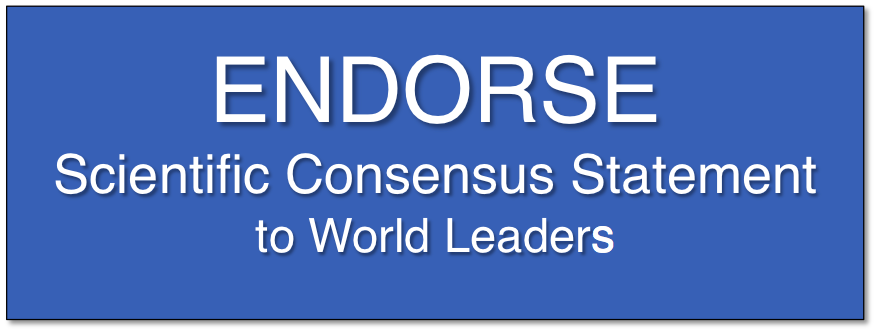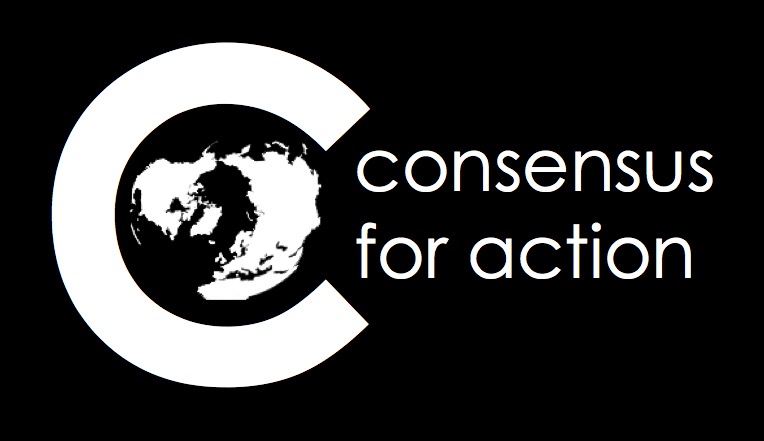A recent opinion piece by climatologist Michael Mann and a follow-up by environmental journalist Andy Revkin and environmental scientist Ken Caldiera raised the issue of how to tell the difference between communicating science, versus advocating for a cause.
We too have been forced to reflect on where that line lies as a result of our combined half-century of conducting research in the arena of global change science, coupled with our recent experiences working with politicians to develop and help them use the Scientific Consensus on Maintaining Humanity’s Life Support Systems in the 21st Century: Information for Policy Makers.
Our view is that communicating science means conveying relevant, accurate scientific information in ways that can be easily understood by the target audience.
Advocating for the use of science in decision-making is a slightly different beast—no longer is just pointing out the scientific realities the end goal. Rather, the point is to stress the importance of how scientific knowledge crystallizes looming problems and can contribute to their solutions.

A memorandum of understanding between California and China to combat climate change. Such agreements must be based on sound science if they are to solve global problems, making it imperative for scientists to communicate what they know in effective ways.
But our recent experiences indicate to us that there are at least two kinds of advocacy when it comes to science: informative advocacy versus prescriptive advocacy. The difference is critical when engaging with policy makers and decision makers.
Informative advocacy as we see it is a close cousin to science communication without advocacy, in that it uses scientific knowledge to foretell the environmental (in our case) changes of probable societal relevance that lie ahead. It differs from pure science communication, which is simply to inform, in having an important goal of injecting the scientific realities into the many different categories of information that decision makers must take into account when formulating policy. Informative advocacy also has a second goal that is critical: learning from decision makers about the kind of information they need. This back-and-forth dialog ultimately opens new doors for decision makers to formulate solutions to complex problems, and new doors for scientists to understand how their science is socially relevant.
Prescriptive advocacy, in contrast, means using your position as a scientist to push for a particular policy action, which can do just the opposite of science communication or informative advocacy. We have found that prescriptive advocacy narrows choices for the decision makers, and often ignores harsh realities that especially elected officials face: a wide spectrum of societal views on what constitutes the most pressing needs, and economic and technological feasibility.
The lines between communicating science, informative advocacy, and prescriptive advocacy become clear by considering messages about and solutions to climate change. As an example of communicating science we point to the IPCC’s Summary for Policy Makers. Every effort is made to lay out the scientific realities, with minimal emphasis on telling policy makers what they ought to do.
As both communicating science and informative advocacy we cite the document we’ve built this website around, Scientific Consensus on Maintaining Humanity’s Life Support Systems in the 21st Century: Information for Policy Makers, which covers not only climate change, but also extinction, ecosystem loss, pollution, and population overgrowth. Scientifically sound broad-brush solutions are suggested, recognizing there are multiple paths to desired destinations. Engaging with policy makers in such ways is crucial, because dealing with the complexities of our multiple global challenges requires political will, not just data juggling.
An illustration of prescriptive advocacy is a letter we were asked to sign, as scientists who helped develop the Scientific Consensus Statement, to place a moratorium on fracking in California, on the grounds that fracking would purportedly exacerbate some of the overarching problems highlighted in the Consensus Statement, notably pollution and climate change. Regardless of our feelings about fracking as residents of the state, we did not sign that letter for two reasons. First, our scientific credentials do not extend to fully understanding the degree to which significant pollution would result—it may, but the scientific consensus has yet to consolidate on that point. (Also see Ken Caldiera’s comments on the temptation to extend your scientific credentials farther than is warranted).
Second, and perhaps more importantly, producing more natural gas from fracking may well be a necessary part of the solution in the transition from a fossil-fuel to carbon-neutral economy—if fracking is done in a way that does not pollute fracked areas, and if it is part of a plan to rapidly replace inefficient coal-burning power plants with cleaner-burning natural-gas facilities. The jury is still out on this hotly-contested issue, but it is clear that reaching the goal of a carbon-neutral energy system will require a multi-pronged approach through the transition period of the next decades, if the goal is to keep the lights on and our cars on the road at the same time carbon-neutral technologies are ramping up. Taking any potentially feasible options off the table at this critical juncture in fact handicaps decision makers, rather than helping them.
In essence, communicating science involves boiling down the discoveries of the practicing scientific community to their accurate bullet points, and highlighting the societally relevant impacts. Informative advocacy involves taking that science to decision-makers (and the general public), and pointing out scientifically sound paths to desired destinations. But it is left to the decision makers (often our elected officials) to decide which of the multiple pathways to solving a particular problem are the most practical to pursue, taking into account the layout of the entire constituency landscape.
Communicating science and informative advocacy identifies destinations and available paths, but does not barricade some paths in favor others.
Prescriptive advocacy, on the other hand, is all about making arguments that your path is better than any other one. The problem with prescriptive advocacy is that you can tie the hands of decision makers, making it more difficult for them to find the best route through what is usually a complex maze of needs and opportunities.
While in our view the lines between communicating science, informative advocacy, and prescriptive advocacy are sharp, they nevertheless can be easily crossed. All three have their roles in bringing scientific realities into the decision-making process and the public arena, of course. But, it is helpful to recognize which one you’re doing when.
By Elizabeth A. Hadly, hadly@stanford.edu and Anthony D. Barnosky, barnosky@berkeley.edu
Elizabeth Hadly is a Professor of Biology and Senior Associate Vice Provost for Undergraduate Education at Stanford University. Her research focuses on ecological and evolutionary impacts of global change. Further information is available from her website. You can follow her on Twitter @LizHadly.
Since 1990, Anthony Barnosky has been on the faculty at the University of California, Berkeley. He is a paleoecologist who studies how global change impacts species and ecosystems. Further information is available from his website. You can follow him on Twitter @tonybarnosky.

